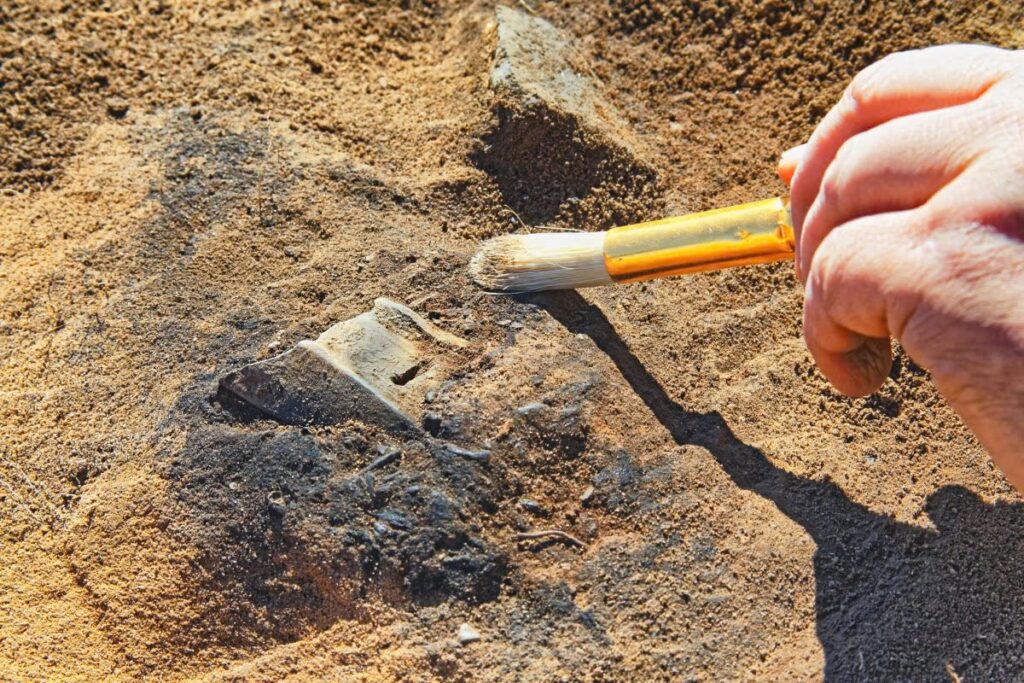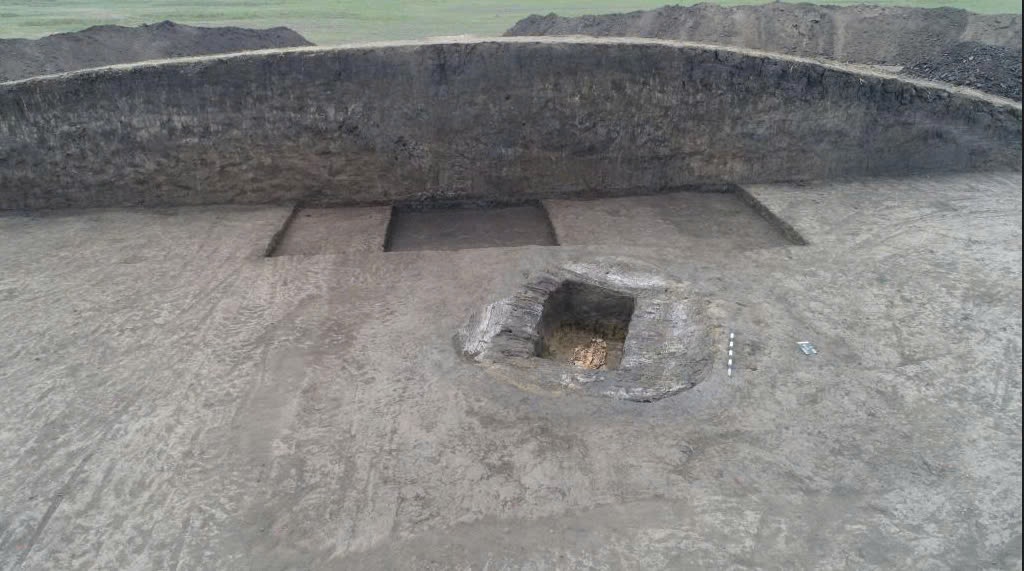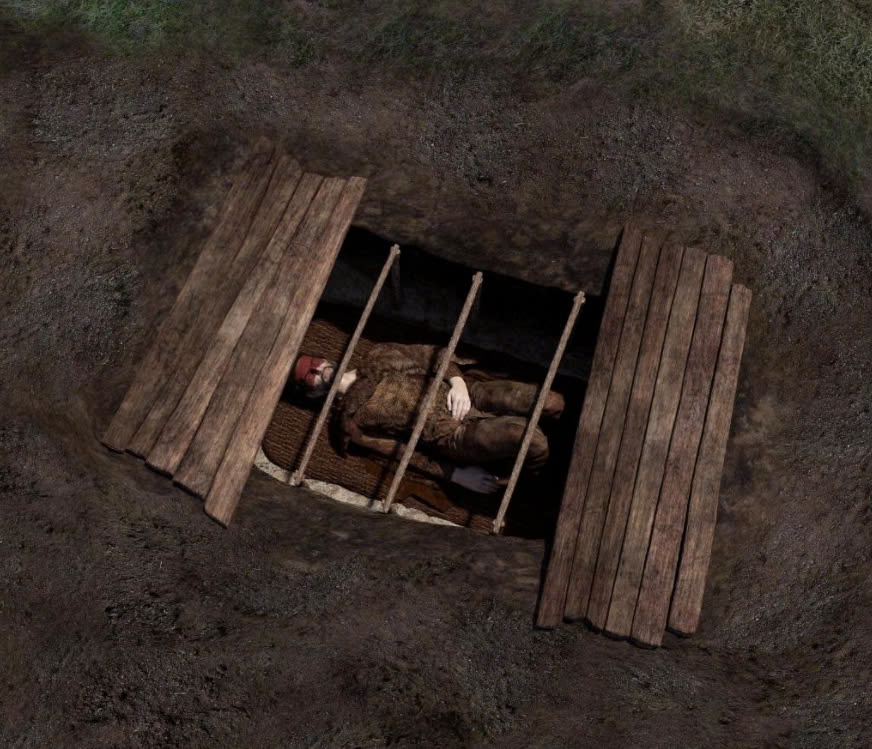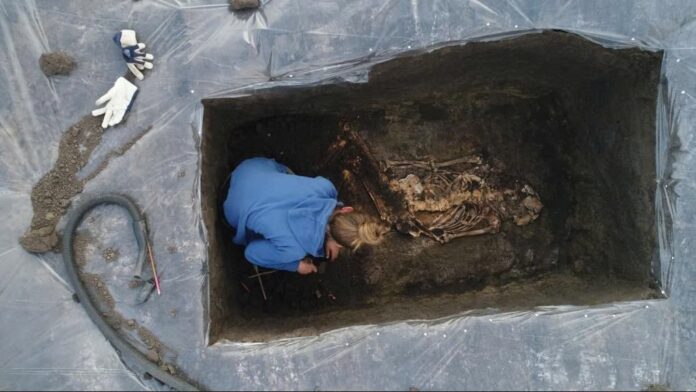Polish Archaeologists Make Startling Discovery

In a groundbreaking excavation in northern Serbia, Polish archaeologists have unearthed a fascinating glimpse into Europe’s ancient past. The discovery of 5,000-year-old bones, belonging to unusually tall men and covered in red dye, has shed new light on the migration patterns and cultural practices of early Bronze Age societies.
The Red Giants: A Clue to Their Origins

The skeletal remains, found in the Šajkaška region of Vojvodina, belonged to men standing over 1.8 meters tall – a significant 20 centimeters taller than previous finds from the same era. Dr. Piotr Włodarczak from the Institute of Archeology and Ethnology of the Polish Academy of Sciences explains, “The red colour of part of the bones attracted attention. This was due to the use of ocher to sprinkle or colour the bodies of the dead.” He adds that red was considered a “sacred colour” in funeral rituals of the time.
Nomads from the East: The Jamnaya Culture

The use of ocher and the extraordinary height of the deceased point to these individuals being newcomers to the region. Włodarczak suggests they likely belonged to the Jamnaya culture, nomadic communities that migrated from the southern steppes of Russia and Ukraine around 3000 BC. This migration had a profound impact on European culture, influencing funeral practices, pottery-making techniques, and social structures.
Unveiling Bronze Age Society
Burial Mounds: A Window to the Past

The excavation focused on two large burial mounds, each containing two spacious wooden chambers. These mounds grew in size over time, reflecting changes in burial practices and social hierarchies. “Proto-state centres of the Bronze Age began to emerge and the elites were separated, as evidenced by the large burial mounds where the individuals were buried,” Włodarczak notes.
A Cultural Transformation
The arrival of these nomadic groups marked a significant cultural shift in Europe. The third millennium BC saw changes in funeral rituals, pottery styles, and the emergence of more stratified societies. This discovery not only provides insight into the lives of these ancient “red giants” but also helps piece together the complex tapestry of European prehistory.

While the excavation took place between 2016 and 2018, the finalization of specialist analyses has only recently allowed researchers to fully understand the significance of their findings. This project, funded by the National Science Centre, continues to unravel the mysteries of our ancient past, one remarkable discovery at a time.

